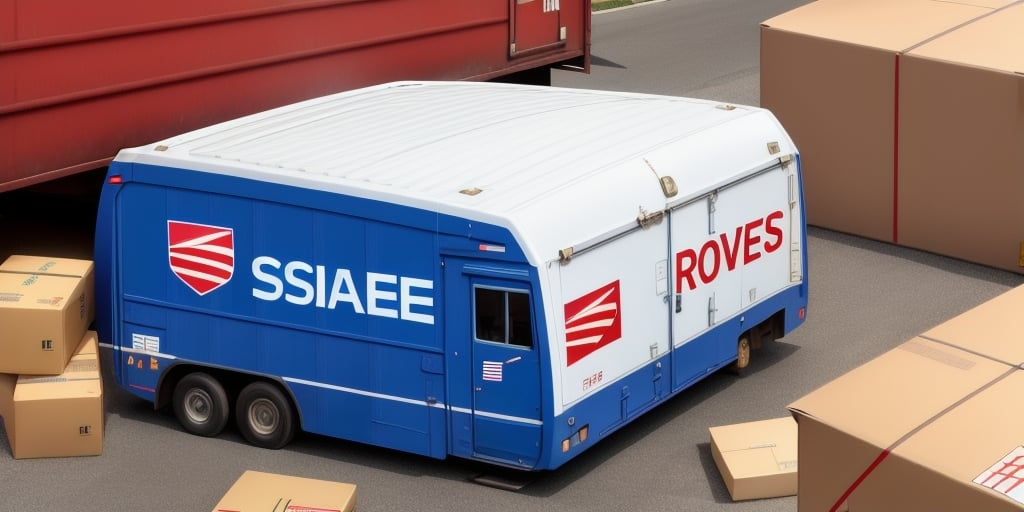How to Use Rate Shopping to Negotiate Better Shipping Rates with the United States Postal Service
When running an e-commerce business, one of the biggest expenses can be shipping costs. That’s why many businesses turn to rate shopping to negotiate better shipping rates with the United States Postal Service (USPS). In this article, we’ll explore why rate shopping is important for e-commerce businesses, how to analyze your business’s shipping needs, and tips for successfully negotiating with USPS to lower your shipping costs.
Why Rate Shopping is Important for E-commerce Businesses
Rate shopping is the process of comparing shipping rates from different carriers to find the lowest price for your shipment. This is especially important for e-commerce businesses because shipping costs can erode your profits. By rate shopping, you can save money on shipping and pass those savings on to your customers.
In addition to saving money on shipping costs, rate shopping can help e-commerce businesses provide better customer service. By finding the most cost-effective shipping options, businesses can offer their customers more affordable shipping rates, faster delivery times, and more reliable shipping services. This can lead to increased customer satisfaction and loyalty, ultimately driving more sales and revenue for the business.
Understanding the United States Postal Service's Shipping Rates
The USPS offers a variety of shipping options, including First Class Mail, Priority Mail, and Priority Mail Express. Each option has different pricing and delivery times. It’s important to understand these options and their associated costs before you start rate shopping.
Additionally, the USPS offers flat rate shipping options for certain packages. This means that regardless of the weight or distance, the cost of shipping remains the same. Flat rate options can be a cost-effective choice for heavier items or those traveling long distances. However, not all packages are eligible for flat rate shipping, and there may be size restrictions.
How to Analyze Your Business's Shipping Needs
Before you start rate shopping, analyze your business’s shipping needs. Review your sales data to determine which products are the most popular and which shipping options are used most frequently. This will help you identify the carriers and shipping methods that make the most sense for your business.
Additionally, consider the size and weight of your products. Some carriers may have weight or size restrictions that could impact your shipping options. It’s also important to factor in any special handling requirements, such as fragile items or hazardous materials, that may require specific shipping methods or carriers.
Finding the Best Rate Shopping Tools for USPS Shipping
There are many rate shopping tools available to help you compare shipping rates from different carriers, including the USPS. Some popular options include ShipStation, ShippingEasy, and Shippo. These tools can help you find the best rates and automate the shipping process.
It's important to note that not all rate shopping tools are created equal. Some may have more features or integrations with other platforms, while others may be more user-friendly. Research and compare different options before choosing one that best fits your business needs. Additionally, some tools may offer discounted rates for high-volume shippers or certain types of shipments, so be sure to check for available discounts or promotions.
Step-by-Step Guide to Using Rate Shopping to Negotiate Better Rates
- Set up an account with USPS.
- Get quotes for your shipments using your rate shopping tool.
- Submit a request for lower rates to USPS based on the quotes you received.
- USPS will either approve or deny your request.
Keep in mind that USPS may require you to meet certain volume requirements to qualify for lower rates.
Negotiating better rates with USPS is not a one-time event. Regularly review your shipping needs and rates to ensure you are getting the best deal possible. This may involve adjusting your shipping volume or exploring other rate shopping tools.
Additionally, consider other factors beyond just the cost of shipping when choosing a carrier. Factors such as delivery speed, tracking capabilities, and customer service can all impact the overall shipping experience for both you and your customers. Weigh these factors when making your final decision.
Tips for Negotiating with USPS to Lower Shipping Costs
When negotiating with USPS, keep the following tips in mind:
- Be prepared with data to back up your request for lower rates.
- Be flexible and open to different shipping options.
- Consider bundling shipments together to meet volume requirements.
- Be persistent and don’t be afraid to follow up on your request.
Another important tip is to understand USPS's pricing structure. USPS offers different pricing tiers based on factors such as package weight, size, and destination. By understanding these pricing tiers, you can better negotiate rates that are more favorable to your business.
Building a good relationship with your USPS representative is also crucial. A positive relationship may help you negotiate better rates in the future and receive more personalized service. Don’t hesitate to ask questions and seek advice from your representative on optimizing your shipping strategy.
How to Evaluate and Compare Different USPS Shipping Options
Before deciding on shipping options, evaluate and compare the different options available from USPS. Consider factors such as delivery time, price, and tracking capabilities to determine the best fit for your business.
Another important factor is the size and weight of your packages. USPS offers different services for packages of varying sizes and weights, such as Priority Mail, Priority Mail Express, and First-Class Package Service. Choose the option that best fits the size and weight of your packages to ensure timely and cost-effective delivery.
Common Mistakes to Avoid When Rate Shopping for USPS Shipping
When rate shopping for USPS shipping, avoid these common mistakes:
- Not comparing rates across different carriers.
- Not considering the destination and weight of the shipment.
- Not factoring in additional fees, such as fuel surcharges or residential delivery fees.
- Not taking advantage of volume discounts.
Another mistake is not checking for any restrictions or limitations on certain items. USPS has specific rules and regulations on what can and cannot be shipped, and it's important to be aware of these before selecting a shipping option. For example, certain hazardous materials or perishable items may have restrictions or require special packaging. Research and ensure that your shipment meets all USPS guidelines to avoid delays or additional fees.
Real-life Success Stories of Businesses Using Rate Shopping for USPS
Many businesses have successfully used rate shopping to negotiate better shipping rates with USPS. For example, one small business saved over $10,000 a year on shipping costs by negotiating lower rates through USPS.
Another business, a medium-sized e-commerce company, increased their profit margins by 5% by using rate shopping to find the best USPS shipping rates. By negotiating better rates and choosing the most cost-effective shipping options, they reduced their shipping costs and increased their profits.
Rate shopping can also improve customer satisfaction. By offering more affordable shipping options, businesses can attract more customers and retain existing ones. One online retailer reduced their cart abandonment rate by 20% by offering more affordable shipping rates through rate shopping.
The Future of Rate Shopping and USPS Shipping Costs
As e-commerce continues to grow, rate shopping will become even more important for businesses looking to save on shipping costs. The USPS may also continue to adjust their pricing and offer new shipping options based on customer demand.
One emerging trend in rate shopping is the use of artificial intelligence (AI) and machine learning. These technologies can help businesses analyze shipping data and identify the most cost-effective shipping options for each package. As AI and machine learning advance, they may even predict shipping costs and recommend the best carriers and services in real-time.
Another factor impacting the future of rate shopping and USPS shipping costs is the increasing focus on sustainability. Many consumers are becoming more environmentally conscious and prefer businesses that prioritize sustainability. This could lead to greater demand for eco-friendly shipping options, which may come at a higher cost. As a result, businesses may need to balance their desire to save on shipping costs with their commitment to sustainability.
Recommended Resources for Small Businesses Looking to Save on Shipping Costs
If you’re a small business looking to save on shipping costs, there are many resources available to help you navigate the rate shopping process. Some recommended resources include the USPS website, the rate shopping tools mentioned earlier, and industry associations such as the National Retail Federation.
In conclusion, rate shopping is an essential tool for any e-commerce business looking to save on shipping costs. By understanding the USPS’s shipping rates, analyzing your business’s shipping needs, and using rate shopping tools, you can negotiate better rates and pass those savings on to your customers. With persistence and flexibility, you can successfully reduce your shipping costs and improve your bottom line.
Another useful resource for small businesses looking to save on shipping costs is partnering with a third-party logistics provider (3PL). 3PLs can offer discounted shipping rates due to their volume of shipments and provide additional services such as warehousing and order fulfillment. Additionally, some 3PLs offer technology solutions that can help streamline the shipping process and provide real-time tracking information for both the business and its customers.









